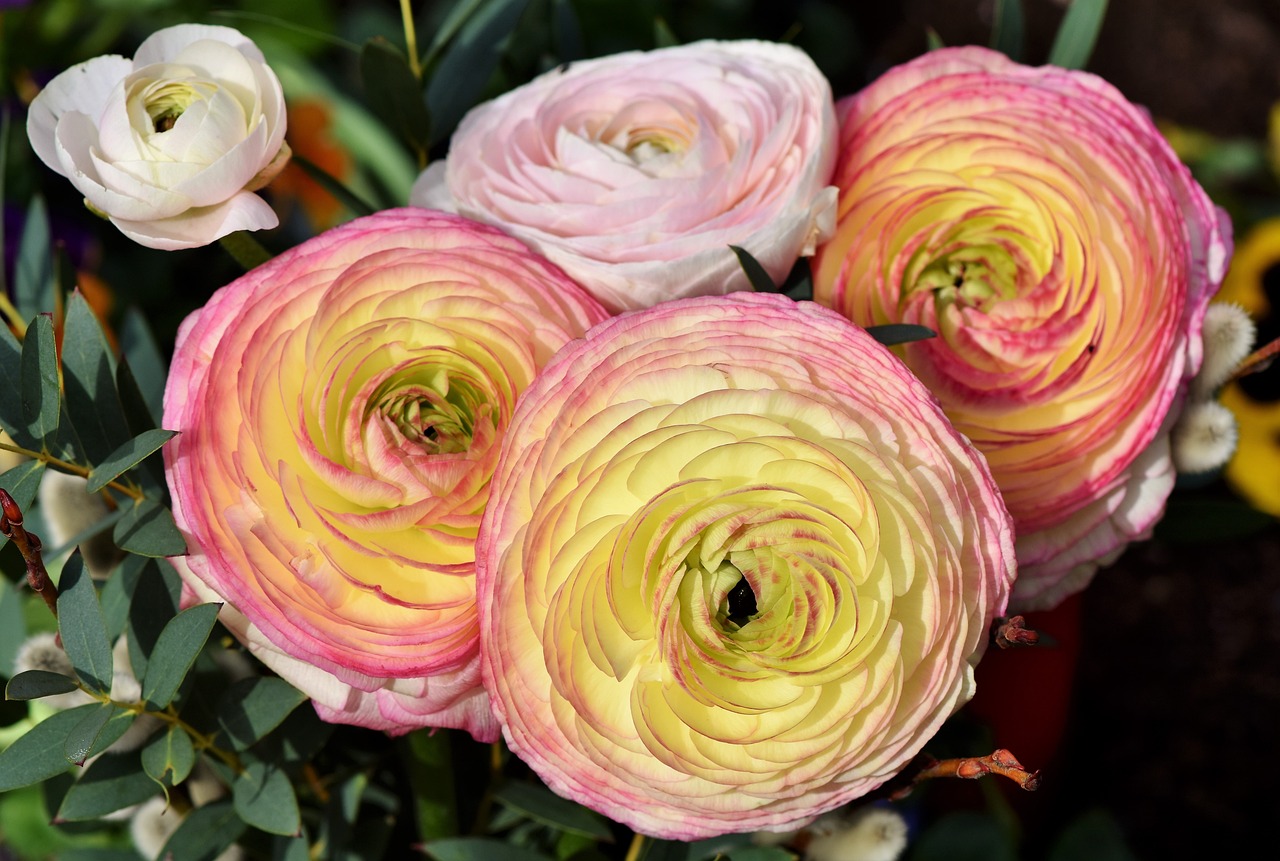Is there anything worse? You take the time to plant ranunculus, only for them to decide not to flower. But as frustrating as it can be, this is something that can be fixed. It all syarts of course, by knowing why they struggle to flower to begin with. That way, you can remedy the underlying cause so that come next flowering season, you see those pretty blooms you initially had hoped for.
Today, I am going to share all my tips and tricks for getting these bowl-shaped flowers to shine!

Why Are My Ranunculus Not Flowering?
There are several reasons why these lovely plants might not be producing flowers. Let’s explore some of the most common culprits:
Improper Planting
Planting your Ranunculus tubers at the wrong time or at the incorrect depth can also lead to a lack of flowers.
Make sure you plant them at the right time for your climate and follow the recommended planting depth.
Poor Soil Conditions
These plants thrive in well-draining soil. If the soil is too heavy or waterlogged, it can lead to root rot, preventing your Ranunculus from flowering.
Insufficient Sunlight
Ranunculus need at least 6 hours of direct sunlight each day to bloom properly.
If they are not receiving enough sun, they might not produce those vibrant flowers we all adore.
Lack of Nutrients
Ranunculus are heavy feeders, requiring a balanced and nutrient-rich fertilizer to support their growth and flowering.
If they’re not getting the necessary nutrients, they might not bloom.
Inconsistent Watering
While they don’t like soggy soil, Ranunculus still need consistent moisture.
If the soil dries out too much or stays too wet, it can negatively impact flowering.
Pests and Diseases
Pests like aphids and slugs, as well as diseases, can weaken your Ranunculus and prevent them from flowering.
Keep an eye out for any signs of damage and treat them promptly.
How To Get Your Ranunculus To Flower
There are a few key factors that might be preventing your Ranunculus from flowering, and I’ve got some tips for you to help them bloom to their full potential:
Ensure They Receive Enough Sunlight
Ranunculus absolutely adores sunlight.
They need a minimum of 6 hours of direct sun each day.
If they’re not getting enough light, they simply won’t flower.
Make sure you plant them in a sunny spot in your garden or move them to a sunnier location if you’re growing them in pots.
Optimize The Soil
These beauties prefer well-draining soil.
If their roots are sitting in waterlogged soil, they’re more likely to rot and not flower.
Add some organic matter or sand to ensure your soil has good drainage.
Use Fertilizer
Ranunculus are heavy feeders requiring a balanced fertilizer to produce those gorgeous blooms.
Use a slow-release granular fertilizer or liquid fertilizer once every two weeks during the growing season.
This is the one to get from Amazon.
Provide Appropriate Amounts of Water
While they don’t like soggy soil, Ranunculus still need consistent watering.
Make sure the soil is kept evenly moist but not waterlogged.
Water them deeply once a week or more frequently if the weather is hot and dry.
Consider The Temperature
Ranunculus prefer cool to moderate temperatures during their growing season.
They typically don’t fare well in extreme heat.
To encourage flowering, try to maintain a temperature range of 50-60°F (10-15°C) during the day and slightly cooler at night.
Planting Companions
Planting Ranunculus alongside other plants that have similar growing requirements can help create a microclimate that encourages flowering.
Consider planting your Ranunculus with other sun-loving, cool-season plants like pansies, snapdragons, or daffodils.
Try To Be Patient
If you’ve recently planted your Ranunculus tubers, they might take a little time to establish and start producing flowers.
Give them some time to settle in, and with proper care, they should reward you with stunning blooms in the coming seasons.
Other Tips And Suggestions When Growing Ranunculus
Here are a few more tips to ensure your Ranunculus thrive and produce those stunning flowers:
- Planting Time: Plant your Ranunculus tubers in the fall or early spring, depending on your climate. In colder regions, plant them in spring after the danger of frost has passed. In warmer areas, fall planting is ideal.
- Spacing: Give your Ranunculus enough room to grow. Plant the tubers about 4-6 inches apart and 2-3 inches deep, with the claws facing downward. This helps them develop a strong root system and ensures they have enough space for adequate sunlight and airflow.
- Pest Control: Keep an eye out for pests like aphids and slugs. These little critters can damage your Ranunculus and prevent them from flowering. Use organic pest control methods to keep them at bay.
- Pruning: Remove spent flowers and yellowing leaves regularly to encourage more blooms and maintain a tidy appearance.
Should Ranunculus Flower Every Year?
Ranunculus should bloom every year, if you’ve provided them with the right conditions – proper sunlight, well-draining soil, adequate water, and fertilizer.
Lastly
So, there you have it! The main causes of why ranunuculas may not flower and the strategies to get them to do so.
With these tips and tricks, you’ll be well on your way to helping your Ranunculus flourish and produce those gorgeous blooms we all love.
Up next: When Do Ranunculus Flower?

